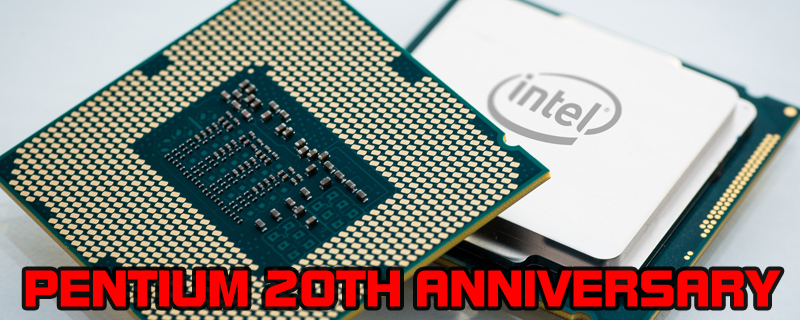Intel Pentium G3258 20th Anniversary Review with Asus ROG Z97 Ranger
Conclusion
When Intel announced that for the 20th Anniversary of the Pentium processor they were releasing a special edition with two cores and no hyperthreading we were somewhat nonplussed. After all, dual cores are for “internet ready PC’s” and not much use for anything else. Then we discovered it would be a K edition, a full on overclocking model, and be priced so cheaply that it was almost disposable, then our interest was definitely piqued.
Clearly if you’re only interested in the highest possible [email protected] numbers, or want to transcode Blu-Ray’s, or even just render a short film, then the Pentium G3258 isn’t for you. In terms of raw calculation the old maxim that more cores is good, even more cores are better, holds true. It’s why a Xeon can get away with such relatively low clockspeeds. When you have 16 or so threads you don’t need to be blisteringly fast. The Pentium hasn’t got any extra threads though. It’s so lacking in threads that it has the potential to be the Emperors New Clothes edition. Except we can see the outfit and we love it.
So why? Well, it’s tough not to love the price. £50 is stupidly cheap for what you’re getting. Of course if you’re only getting 3GHz and two cores it’s about right. Thankfully the Pentium G3258 20th Anniversary Edition has plenty of tricks up its sleeve.
If you’ve ever felt like having a go at the world of overclocking then there has rarely been a better time. The Haswell CPUs are as easy to overclock as almost any that have ever existed, and the Pentium simply begs to be thrashed like a masochist at an all-you-can-whip party. With only a small bump in vCore you can squeeze some extraordinary clock speeds from it. We ended up with 4.5GHz @ 1.2v, which we think you’ll agree is a monumental boost. It rewards that performance increase too and, thanks to the results we obtained in both 3D Gaming and general day to day tasks, shows that two cores of suitable speed can be plenty for almost all your needs. Sure there is extra to be had from a better CPU, of course there is. Even in gaming benchmarks the benefit of a faster, bigger, CPU is clear. But the Pentium has enough to not be discarded out of hand.
So it’s cheap as a good night out on the town, responds well to overclocking and yet doesn’t cost the earth to replace if things go wrong and, as long as you’re judicious in what you’re asking it to do, doesn’t lag behind its stablemates. A great little chip that has more going for it than you might initially think, and so we’re awarding it our OC3D Gamers Choice and, thanks to that £50 price tag, our Value For Money too.
Thanks to Intel for supplying the Pentium G3258 20th Anniversary for review. Discuss your thoughts in the OC3D forums.
We’d also like to take this opportunity to thank ASUS for supplying their Z97 Maximus VII Ranger motherboard for us to test the G3258 on. It proved itself to be a perfect accompaniment to the little Pentium with bags of performance, plenty of tweaking options and extremely easy overclocking.
Sometimes motherboards are cheap, and sometimes they’re good value. The ASUS Maximus VII Ranger definitely falls into the good value bracket. Add the great overclocking and power phases, SupremeFX audio, M2 socket as well as plenty of SATA 6Gb/s ports and USB ports, to the low price tag, ROG accoutrements and ASUS reliability and it’s an easy Gold Award winning motherboard, and well suited for a bargain basement gaming behemoth. It’s surprising how much motherboard you can get for a mere £125 these days.






